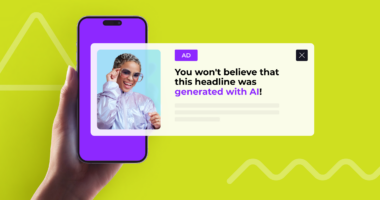Mobile Attribution can get complicated. But, it’s also essential for effective online advertising.
With 90% of the global internet population using a mobile device these days, there’s absolutely no doubt that mobile advertising is a solid bet. However, without mobile app attribution your advertising costs could be going to the wrong places.
So, make sure you invest the time and effort in proper mobile attribution now to set your advertising up for success in the future. And that’s exactly why I’ve created this guide for you.
Have a look.
Mobile Attribution
What is mobile attribution exactly? The concept itself isn’t too complicated: connecting an act of user engagement (such as an app install) with a marketing effort (such as a campaign or specific ad). In other words, giving credit, or attributing, a successful download / purchase / other interaction to a certain marketing effort.
It’s important to be aware of which marketing campaigns are driving which actions. This way, app owners can know which campaigns and ads are most profitable. Because, after all, if you’re paying for advertising (or paying someone else to do it) you want to know where your money’s going and if it’s worth it.
The how is where we get more technical. There are multiple models of mobile attribution and methods that I’ll get into later on.
Mobile attribution vs ad attribution
Let’s also mention ad attribution in general briefly… If you didn’t know this already, attribution is important in every realm of marketing: from TV to apps to web.
For web attribution, the process works a bit differently than for mobile. Online, pixels and cookies take care of the job of tracking.
With mobile advertising, the given app in question tracks users with a User ID. That’s where something called SDKs (Software Development Kits) will come into play, but we’ll elaborate on that later.

Mobile App Attribution models
The next thing we need to cover: the varying models of mobile attribution. Why are there various models? And what criteria determine which you would choose?
An advertiser needs to determine which channels are most profitable, which traffic sources that they are paying for are delivering the most conversions. Using the following models, advertisers can identify the value of various marketing channels and how to further optimize their marketing strategy.
An advertising tracking software like Voluum allows you to connect mobile channels (data that it gets from mobile attribution tools such as AppsFlyer) with other channels, like banners that advertise the mobile app.
These models focus on the various “clicks” a user will make. Typically, a user will not convert immediately after seeing the first ad and clicking on it. And that’s exactly why advertisers choose to send messages through various channels.
But when a user has seen ads from several channels, and maybe even clicked on multiple ads – which ad / channel gets credit if they eventually convert? The following models are methods to assign credit to a given channel.
Single touch
Single touch has two categories of attribution modelling: First click attribution and last click. These models recognize that while a user’s journey through a funnel may be multi-faceted, only one channel gets credit for attribution.
It’s pretty self explanatory but let’s just be extra clear 😉
First click
The mobile ad / channel clicked first gets credit for a conversion.
Last click
The mobile ad / channel clicked last gets credit for a conversion.
Multi-touch
As we mentioned, a user journey from click to conversion may involve multiple advertising channels. While single-touch attribution models only credit one channel as the first or last, various, more complex, multi-touch models were developed to give credit in varying weights / percentages to channels in the funnel.
Multi-touch approaches of attribution are obviously more holistic and comprehensive, however they aren’t used as commonly as single-touch.
Linear
The linear model attributes equal value to every channel touched by a user.
Time decay
In the time decay model, channels are attributed according to how recently a user interacted with them. The more recent, the heavier.
View-through
This model provides attribution to ads that were viewed, but not clicked.
Attribution window
An attribution is also known as a conversion window; this is the amount of time that a publisher has to be credited with a conversion.
As we’ve said, a mobile funnel may be complex, have multiple channels, and take time. Thus, a traffic source typically has around 7 seven day more or less for a conversion to occur. This way they are attributed that conversion.
The mobile attribution window depends on the goals of your campaign and the desired conversion. If it is a bigger purchase or something that requires a lot of consideration from the user, then it’s probably best to set a longer period. If the conversion is fairly simple, or the aim of the campaign is short-term, then obviously make the window shorter.

Top Mobile attribution providers
Mobile attribution parnters (or MMPs) make the job significantly easier for advertisers. While they may cost something up front, using the proper tools makes sure of long-term success for your advertising strategy.
1. AppsFlyer
For proper tracking and subsequent optimization, you’ll need an SDK. An SDK is a “Software Development Kit” used to create an application.
Most ad networks require an app to provide an SDK. However, implementing, formatting and integrating SDKs separately for each ad network is an overwhelming amount of work. Also, it’s probably out of the skill set of the average app marketer.
And what’s more, that amount of work in implementing multiple SDKs, is arguably unnecessary. Especially when you can have a Universal SDK.
An app with an integrated Universal SDK can be connected at once to a whole advertising ecosystem. This Universal SDK can do the tracking and attribution for all the ad networks.
And Appsflyer, a mobile marketing analytics and attribution platform, can provide that service for you. And the best part? Our good old Voluum Tracker and Appsflyer integration forms an affiliate and advertising tools ecosystem that allows you to connect all the dots.
2. Singular
Another great MMP is Singular. It boasts the ability to track user cross-devices, from in-app activity through emails to SMS traffic. It allows its users to go beyond traditional marketing channels usually reserved for Facebook and Google.
Singular can also be configured to work with Voluum.
3. Adjust
Adjust puts emphasis not only on measuring in-app behavior but also on bot protection and user privacy. It is specifically designed to work in the world after the iOS 14.5 update. Adjust allow app developers to track subscriptions and manage them. Sprinkle that with complex automation features for building an audience and you get yourself a very competent mobile measurement partner.
Voluum Tracker and MMP
Voluum, an industry-leading ad platform, is a great addition to any marketing campaign that also track in-app engagements.
Why should you use both? Well first of all, as an advertiser you should be tracking every channel in detail. By having them available all on one platform you can comprehensively compare them and take action to optimize your campaigns. Skip the platform-jumping.
Secondly, while MMP can tell you what users do in a given tracked app, they can’t track data from all channels. If you advertise your mobile app using different channels, for example banners, MMP can’t track data there. Thus, if you’re integrated with Voluum, you can tell even more precisely which publishers are delivering the best results.
A third benefit: if you incidentally buy from one of our 14 cost-integrated sources, you can attribute how much you pay for each customer engagement action. Again, this will hone your performance marketing efforts and budget to optimize for an even better strategy.
You can check how a mobile-oriented advertising agency Tappx has used Voluum with AppsFlyer to improvie their ROI and cut down costs.
App tracking and attribution data privacy
As most online entities move towards more privacy-oriented policies, advertisers are faced with increasing challenges. For starters, Apple’s new privacy standards launched in Spring 2021 with iOS14 pose a pretty big challenge – as most advertisers are aware..

The short version is that Apple has started asking users to allow for tracking since iOS 14.5 – and most people don’t allow it. This blocks access to IDFAs (ID for advertisers). So, Apple handles conversions, not AppsFlyer. This makes attribution harder. Because there’s no way of identifying users, it’s hard to say which click resulted in which conversion. The attribution can only be based on campaign IDs. AppsFlyer can send Voluum postbacks with no click ID – as in with no user identifying data – but with a campaign ID instead. Thus, Voluum knows which campaign caused a given conversion. Even though reporting options are limited, at least it’s working.
And that’s the point… while this new update greatly limits mobile attribution – and most likely more to follow – if you have the support of mobile analytics or affiliate software like Voluum, you can always count on some sort of solution.
Because most of the time with these privacy measures, there is some sort of workaround, and usually industry-leading platforms like Voluum and Appsflyer are the ones to pioneer these solutions.




